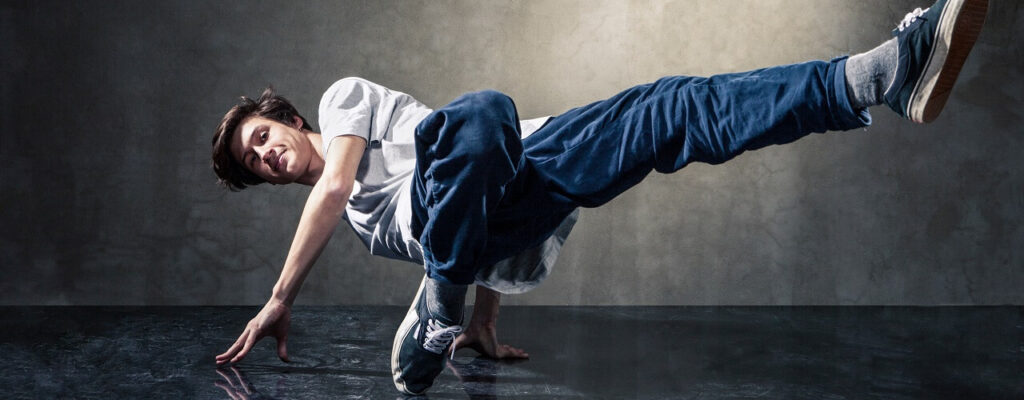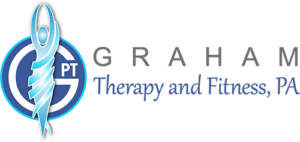Flexibility Training for Dancers: Exercises for Safe and Improved Range of Motion

Looking for the extension of your dreams? We can help with flexibility training for dancers!
There’s no denying that flexibility training for dancers is crucial. Many of the most iconic dance shapes, such as arabesques and grande jetés, require great flexibility. Plus, professional performances frequently include impressive displays of contortion, with dancers twisting themselves into beautiful, impossible poses.
It’s no surprise, then, that dance students are always clamoring to improve their flexibility. Unfortunately, there are several myths about flexibility and flexibility training. If a dancer wants to improve their range of motion, it’s essential to do so safely.
The team of physical therapists at Graham Therapy and Fitness has extensive experience providing flexibility training for dancers. We’ll work closely with you to develop a customized stretching program that addresses your impairments and aligns with your goals.
To learn more about how physical therapy can help you nail your extensions and grande battements–and help prevent injuries to your ligaments, muscles, and bones–schedule an appointment with us today!
The Role of Stretching in Flexibility Training for Dancers
When most people want to improve their flexibility, they immediately turn to stretching–and often make some major mistakes. While stretching is a great way to work on your flexibility and range of motion, there are several things you need to keep in mind.
Firstly, not all stretches are the same. There are actually several categories of stretches. As a dancer, you should be familiar with the following:
- Static stretches are what most people think of when they think of stretching. They involve holding a single position, such as touching your toes, for a set amount of time. Many classic barre stretches are static stretches.
- Dynamic stretches are controlled movements in which you guide your joints and muscles through their range of motion. Examples of dynamic stretches include leg swings, lunges, or arm circles.
- Ballistic stretches involve pulling your joints through their full range of motion and then incorporating a bouncing or pulsing motion, pushing your joint a little further than usual. If you’ve ever added a pulse while performing a butterfly pose or toe-touches, you’ve incorporated ballistic stretching.
While there’s a place for all three types of stretching in flexibility training, it’s crucial that you understand when and how to utilize these stretches. For example, static stretches are never a warmup and should only be performed after a workout when your body is already warm. However, dynamic stretches can be a fantastic warmup, as they get the joints moving without too much intensity.
Think about the structure of a classic ballet barre. You begin with pliés, a type of dynamic stretch that help increase the range of motion in your hips–while also getting your heart pumping. You then move through other movements incorporating dynamic stretching in the hips, ankles, and feet.
Only after you’ve been at the barre for 30-45 minutes do you start incorporating static stretches, using the barre to help you dig deeper into the stretch. Some barre stretches also involve ballistic movements (such as pulsing over an extension).
You should follow a similar routine when incorporating stretches into your workout routine. Use dynamic stretches as part of your warmup (dynamic Yoga flows are a great way to warm up before a workout), then incorporate static and ballistic stretches at the end of the workout when your body is nice and limber. Not only will you be more likely to see improvements, but you also reduce your risk of seriously injuring yourself.
The Role of Strength Training in Flexibility Training for Dancers
When it comes to improving flexibility and range of motion, many people overestimate the role of stretching while severely underestimating the role of strengthening. If you’ve been stretching regularly and safely and are still not seeing the desired results, it may be time to incorporate more strength training.
Dancers should focus on strengthening a few essential parts of the body when working on improving their flexibility:
- Core Muscles: The core plays a significant role in stabilizing your body and is crucial for many of those iconic dance poses we associate with flexibility, including leg extensions, grand battements, and arabesques. Some great core exercises include planks, glute bridges, and locust pose.
- Hip Abductor Muscles: These muscles are located along the side of your hip and, like the core, can help stabilize your body as you push your legs through their full range of motion. Clamshells, fire hydrants, and walking sideways with a resistance band will also work your abductor muscles.
- Hip Rotator Muscles: The hip rotators include the gluteus maximus and other buttock muscles. Strong rotators ensure your hip can move through its full range of motion (such as during a high kick/grande battement). Squats and deadlifts are great choices here, along with more clamshells and fire hydrants.
Graham Therapy and Fitness Will Help You Get Flexible!
Whether you need to work on stretches or strength training (or both), our Graham Therapy and Fitness-based physical therapists will help you develop a customized workout plan to help you see improvements and reduce your risk of injury. We’ll work closely with you to understand your strengths, limitations, and overall goals to ensure we address your specific needs!
To get started, request an appointment with us today!
Sources:
- https://www.ncbi.nlm.nih.gov/pmc/articles/PMC5609666/
- https://www.dancemagazine.com/stretches-for-dancers/
